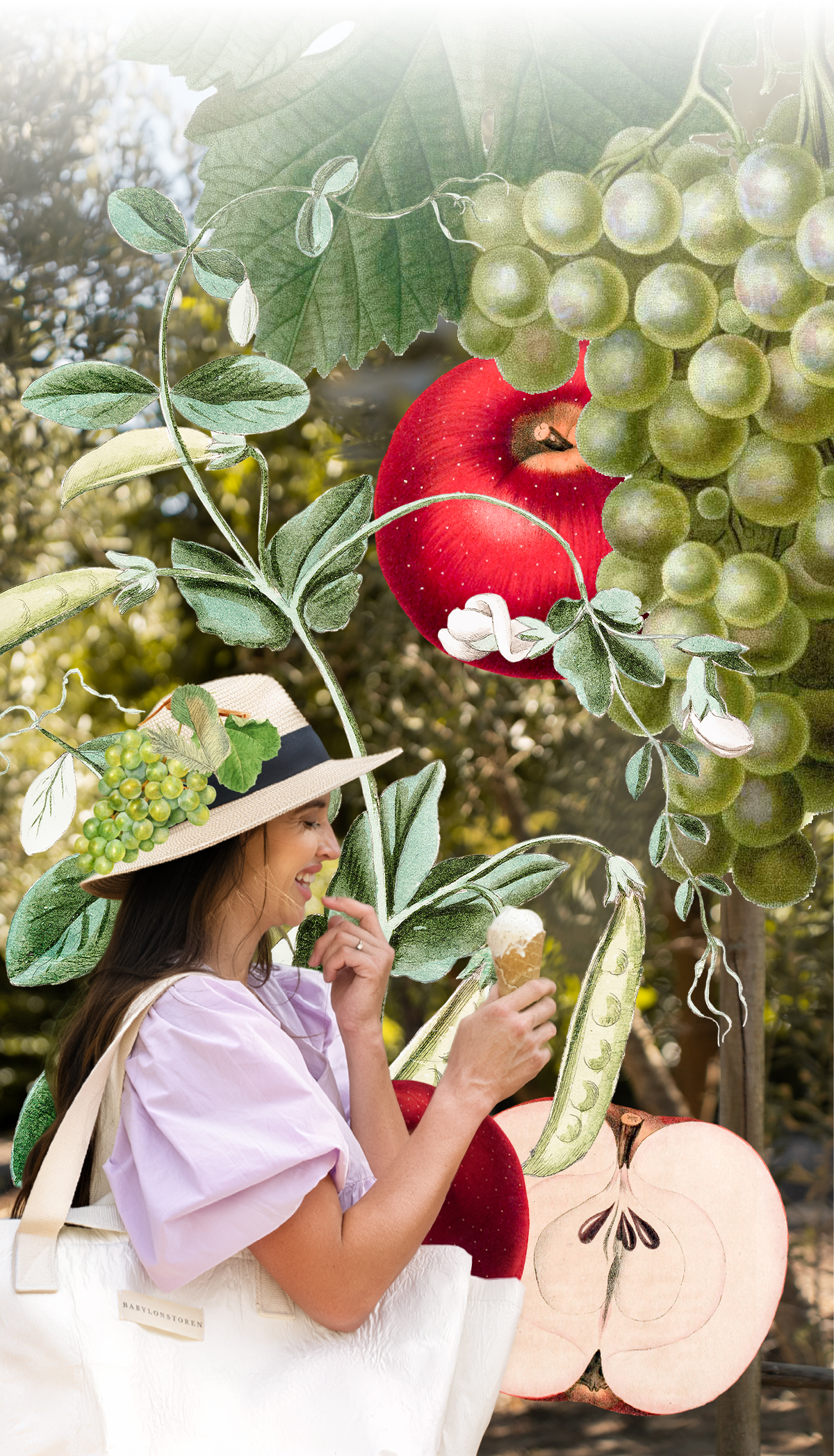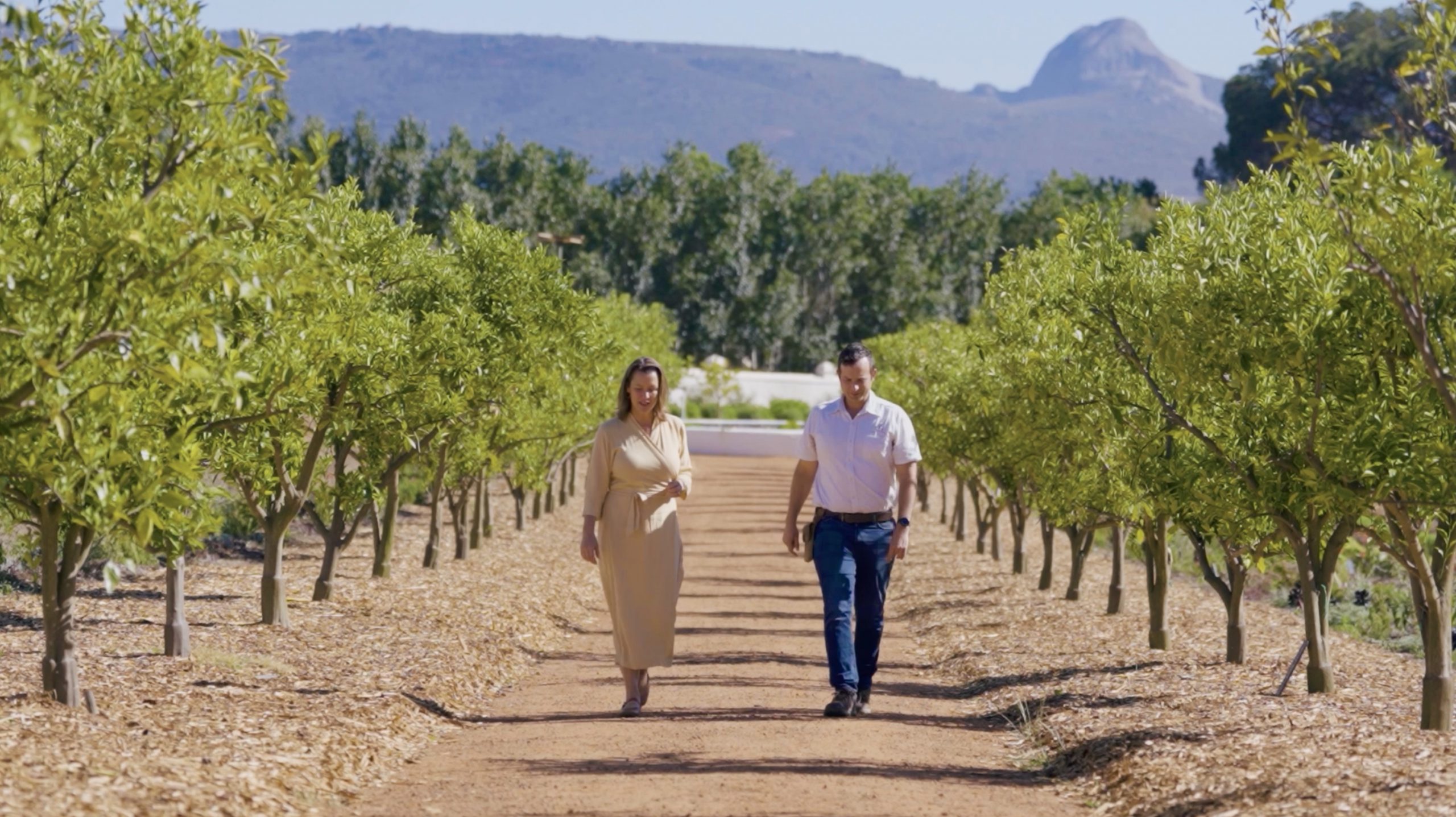TEXTURES OF SOETMELKSVLEI
August 26th, 2024The Handmade Tale
Chapter 1
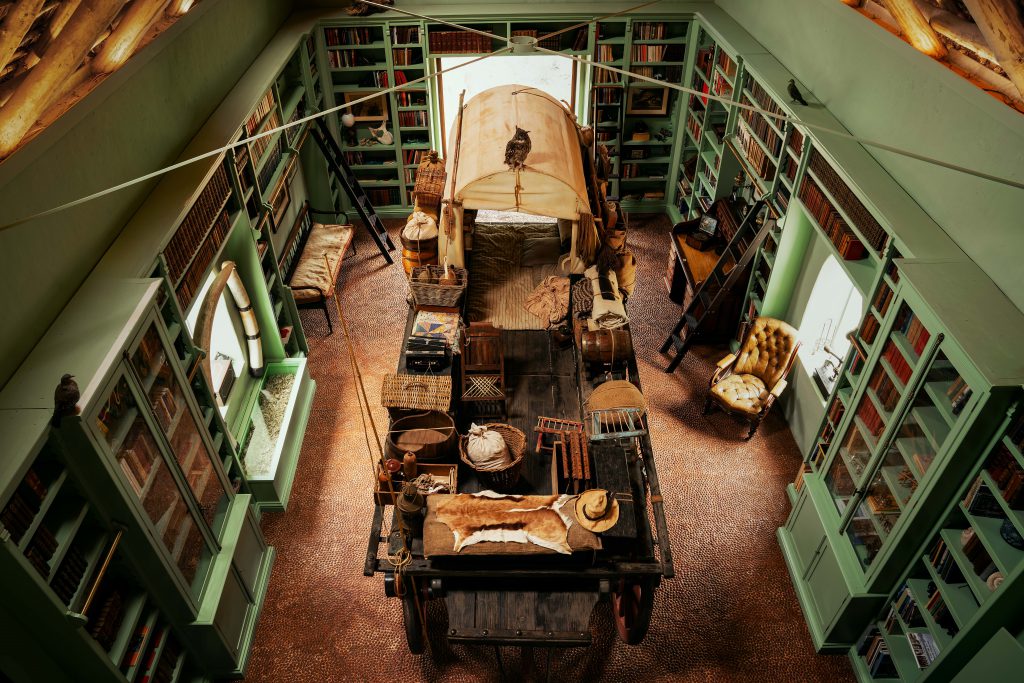
A restored ox wagon in the Old Cellar, equipped with everything a family needed for the trek to the coast, and to set up camp once they reached the fishing waters.
A short shuttle ride from Babylonstoren lies Soetmelksvlei, a 19th century farmyard that celebrates the artisanry and self-sufficiency of a working farm in the late 1890s. To some, this era represents a sweet spot in civilisation’s modernisation: a time of considerable sophistication in terms of production processes, yet with a few years to spare before the first Model T Ford would roll down cart tracks, or electric lightbulbs would illuminate our world on demand.

Animal hides were ubiquitous in farm homes in the 1890s. Stylist Sylvia van Heerden and her team aged the straight outlines of contemporary hides by cutting and distressing the edges, in keeping with hides at the end of the 19th century.
Over the last five years a team of historians, heritage consultants, master builders and crafters have laboured to recreate this period-specific experience that celebrates the beauty of handcraft. The crown jewel is the Farmhouse, an impeccably restored home dating from the mid 19th century. Etienne Hanekom executed the creative direction of Soetmelksvlei, while stylist Sylvia van Heerden and her team of magic makers ensured all the textural details look authentic.

Left: An example of antique embroidery hangs in the Farmhouse dining room. It served as inspiration for many of the embroidered items created by local craftspeople in the style of the era.
Right: New embroidery of an aloe in flower, created by a local artisan for Soetmelksvlei.

Left: Embroidery kits at the Jonkershuis Farm Shop, should inspiration strike.
Right: A kaleidoscope of unique blankets, knitted, crocheted, and quilted by local artisans. Also needles and natural yarns for knitters.

Left: Knit a mohair shawl with this pattern and yarn kit from Jonkershuis Farm Shop.
Right: Hand-knitted bobble jerseys for children at Jonkershuis Farm Shop.
Jonkershuis Farm Shop at Soetmelksvlei is a trove of artisanal treasures, from homemade treats to unique quilts, blankets, embroideries, leatherwork, candles, enamelware, cast-iron cookware, DIY knitting and embroidery kits, and so much more. The ideal is obviously to see, touch and experience these items at Soetmelksvlei – an intoxicating experience for any lover of antiquities and old-world crafts – but should a farm visit not be on the cards, a selection of Soetmelksvlei products is available online for delivery countrywide.
Golden thread throughout
Handcraft is what defines Soetmelksvlei. Though the yard and its buildings are a meticulous recreation of a working farm before the turn of the 20th century, some fun was had with the juxtaposition of old and contemporary elements, especially in the Old Stables Restaurant and the indoor play area in the Old Cellar (more about that in a later chapter of The Handmade Tale).

Right: A collection of vintage leather halters, bridles and leads in the Old Stables Restaurant.
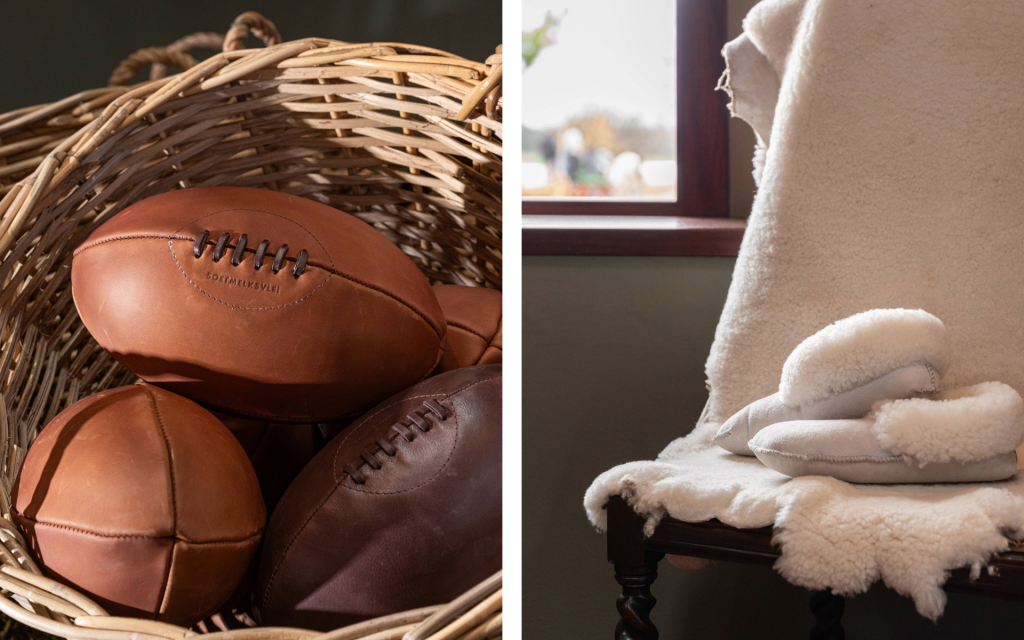
Left: Hak hom, Blokkies! with these traditional beauties. Leather rugby balls were used up until 1980, when leather was replaced with waterproof synthetic fabric.
Right: Cosy 100% merino wool slippers and sheepskins are available from the Jonkershuis Farm Shop or online at shop.babylonstoren.com.
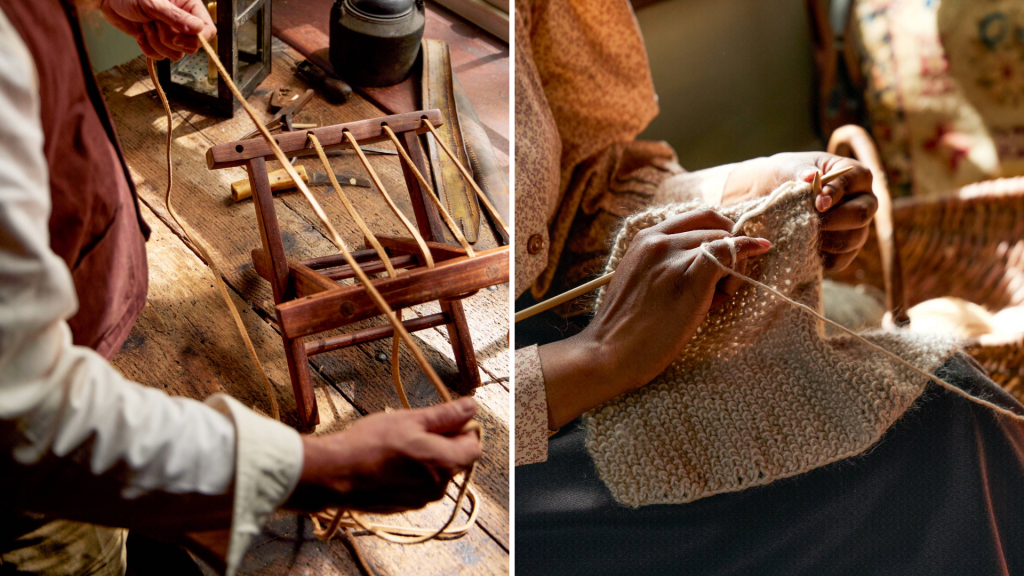
Left: Back in the day, everyone on the farm had chores to do. The farmer’s study has a work station with leathercrafting tools to make and repair toys and household items.
Right: Not only clothes and blankets, but also knitting needles and yarn were mostly homemade, homegrown, and homespun at the time.
Busy hands are happy hands
Soetmelksvlei is home to a remarkable collection of antique artisanry, as well as period-specific tools and implements. “It was difficult to find textiles from the late 1800s that were still intact, as fibres disintegrate over time. It’s also difficult to accurately date textiles, especially when their history has not been preserved,” says Sylvia, who travelled the country in search of period pieces.
Soetmelksvlei also encourages guests to participate and acquire skills. Workshops are hosted regularly, with subjects ranging from leathercraft to butter churning, baking, boerewors making and quilting. In the farm’s Workshop, master crafters give daily carpentry and ironmongery demonstrations, where guests are welcome to observe, ask questions and exchange knowledge.
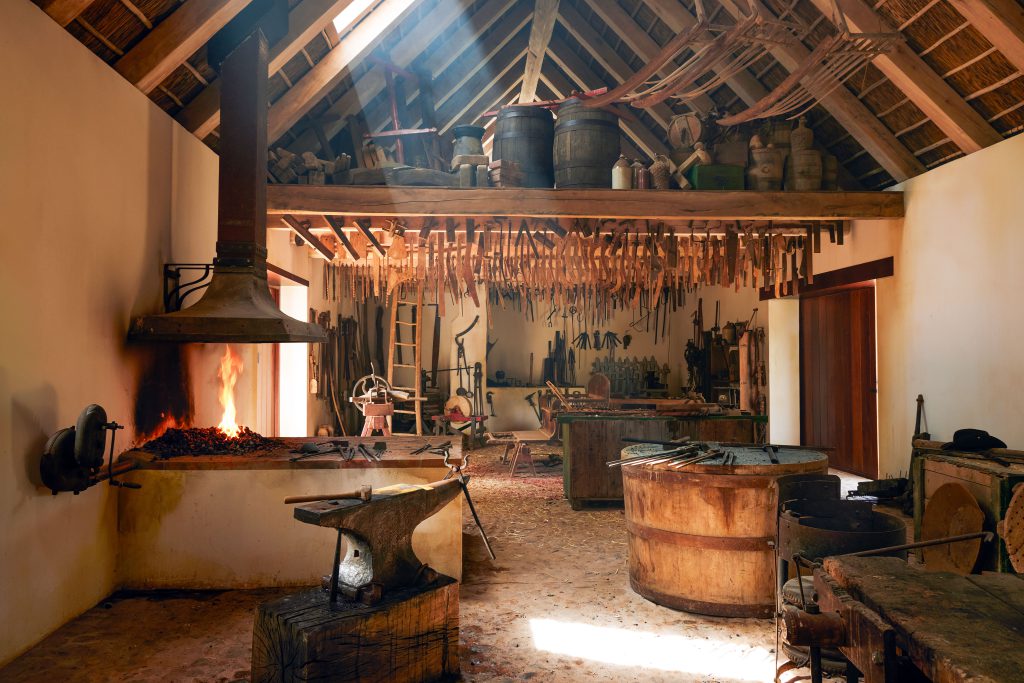
The Workshop at Soetmelksvlei restores antique ox wagons and farm implements.

Left: Antiques are repaired or new parts are fashioned to keep old wheels turning.
Right: Antique kitchen utensils in the Farmhouse kitchen.
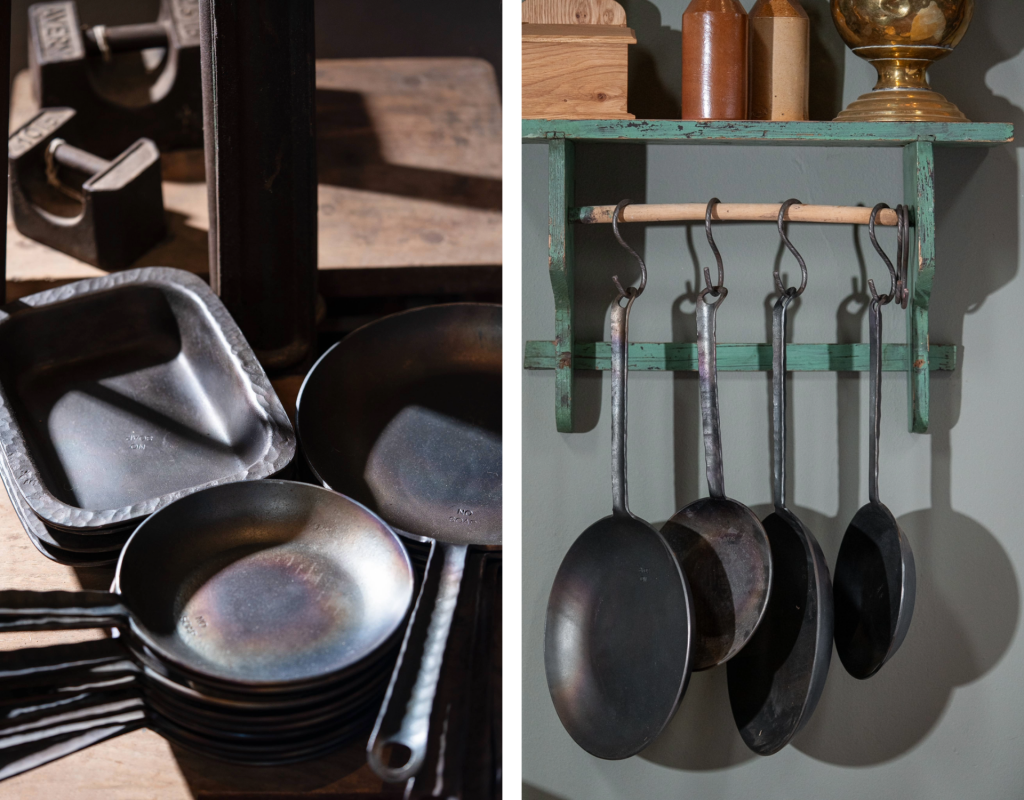
Cast to last – cookware by ironmonger Dan Devonshire at the Jonkershuis Farm Shop.
This is but a taste of the textures and crafts of Soetmelksvlei. Follow Babylonstoren on all social media channels for updates on Soetmelksvlei.
In Chapter 2 of The Handmade Tale, we meet the animals of Soetmelksvlei and the people who care for them.
Plan your visit to Soetmelksvlei: https://babylonstoren.com/soetmelksvlei
